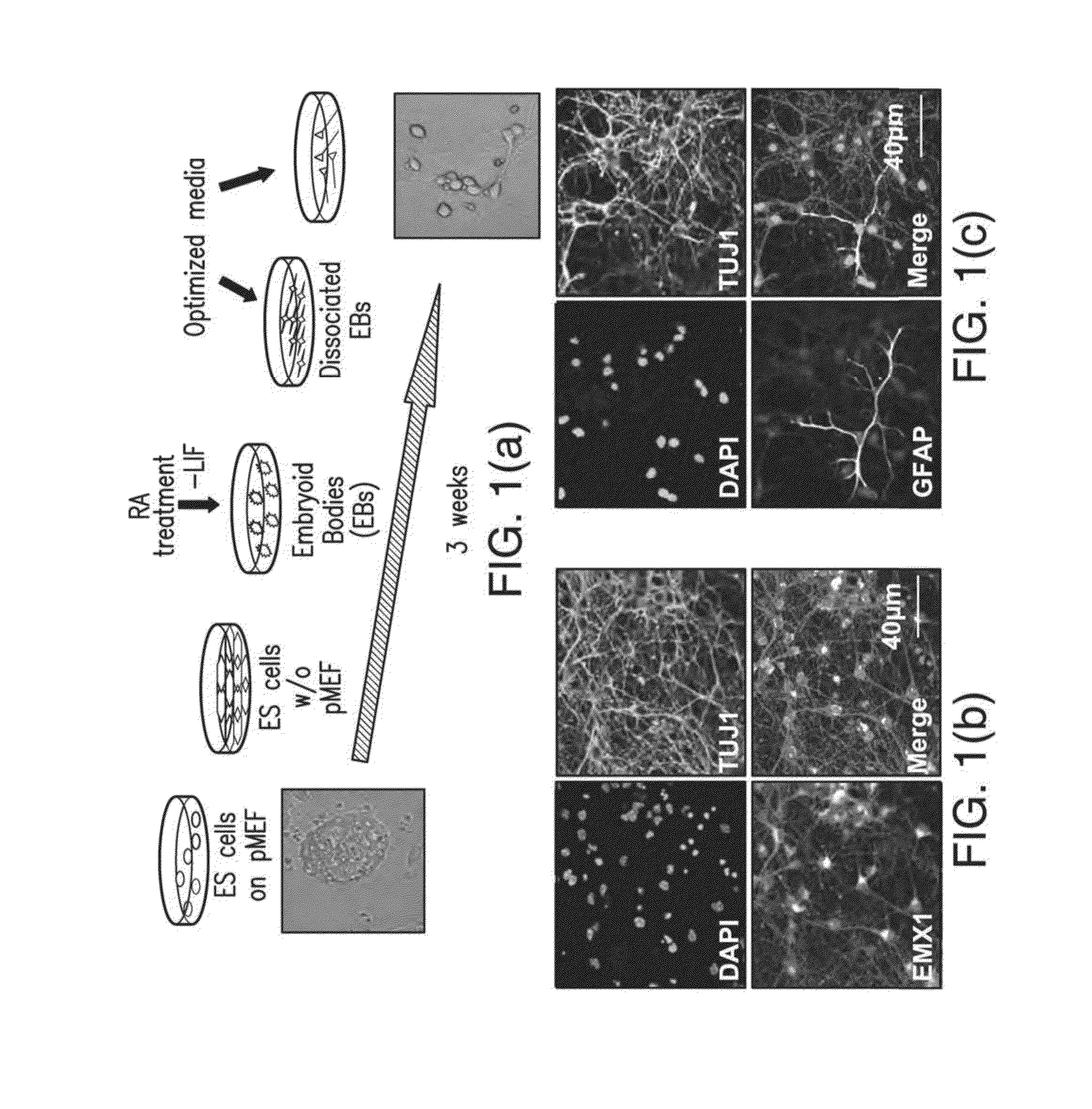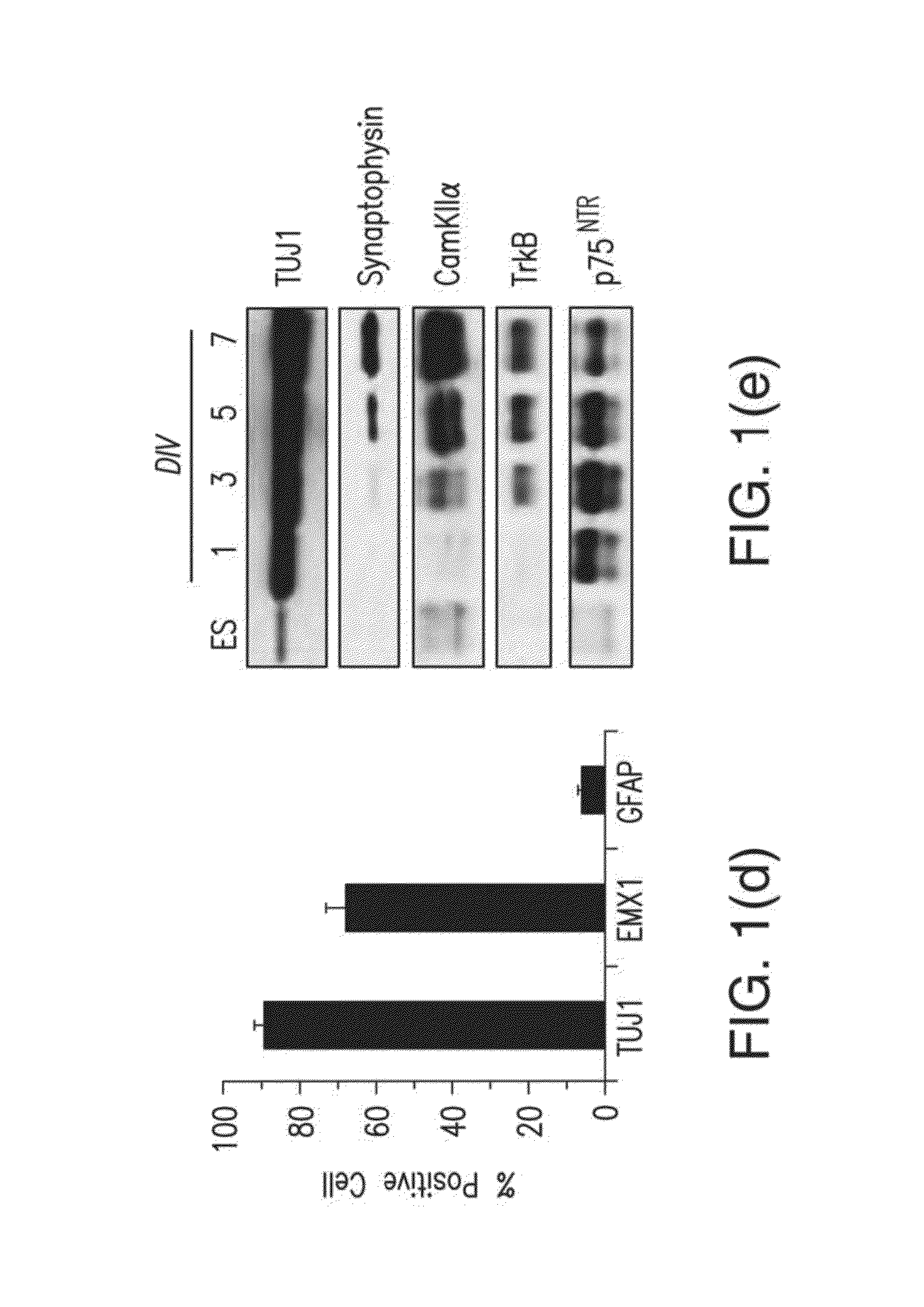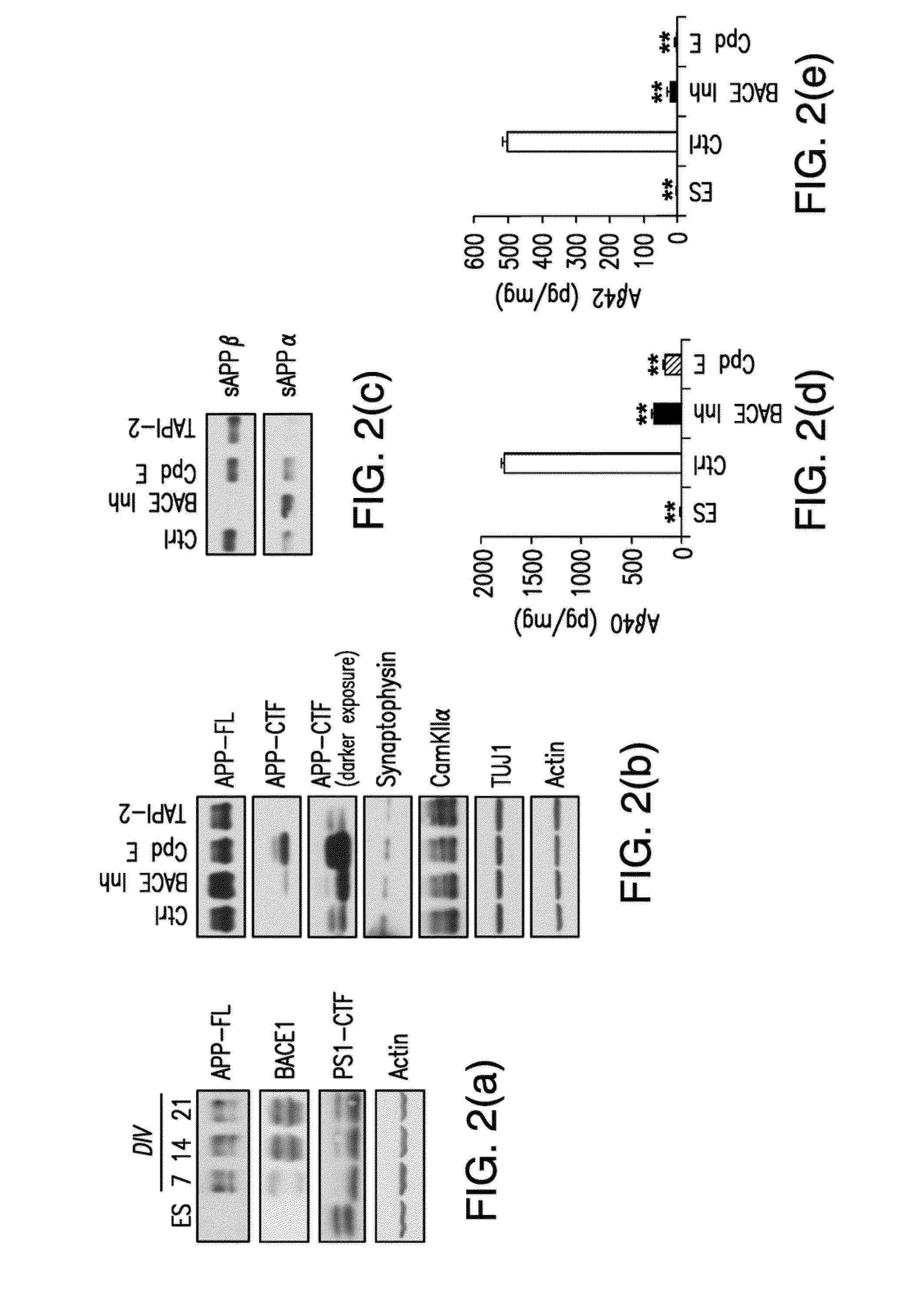Screening Assays Using Stem Cells and Stem Cell-Derived Neurons from Mouse Models of Alzheimer's Disease
- Summary
- Abstract
- Description
- Claims
- Application Information
AI Technical Summary
Benefits of technology
Problems solved by technology
Method used
Image
Examples
working examples
6. WORKING EXAMPLES
6.1. Example 1
[0062]Embryonic Stem Cell Culture.
[0063]ES cells were cultured on mitomycin C (Sigma) treated primary mouse embryonic fibroblasts (PMEF) for two passages after thawing, with subsequent PMEF deprivation for two passages in ES medium containing supplemented with 1,000 U / ml LIP (Millipore). Prior to plating, cell culture dishes were coated with 0.1% gelatin (Chemicon) for 30 min. ES medium was changed every day.
[0064]Directed Differentiation of ES Cells into Pyramidal Neurons.
[0065]Methods were adapted and optimized from Bibel, M., et al. Nat. Neurosci. 7, 1003-9 (2004) and Bibel, M., Richter, J., Lacroix, E., & Barde, Y. A. Nat Protoc. 2, 1034-1043 (2007)). Prior to differentiation, newly defrosted ES cells were cultured on PMEF cells for 2 passages. Cells were subsequently passaged twice without feeder cells on gelatin-coated plates. After 2 feeder-free passages cells could be frozen and used to begin Embyoid Body (EB) formation immediately after thaw...
example 2
6.2. Example 2
[0088]Mouse ES cells isolated from. Tg2576 mice were subjected to directed differentiation as previously described. After dissociation of embryoid bodies, neurons were plated in poly-D-lysine and laminin coated 96 well black plates at a density of 1.5×105 cells / cm2 which is 45,000 cells / well. Media was changed to N2 containing media after 4 hours and again the next day after plating. Two days after plating, media was changed to B27 containing media which was replaced every 2 days after that. On day 8 after plating the mouse ES derived neurons were treated with the compounds from a library of 446 clinically relevant compounds which have a history of use in human clinical trials, the NIH clinical collection (NCC) (http: / / www.nihclinicalcollection.com / ), for 24 hours in 150 μl B27 media. Each plate of ES derived neurons was treated with NCC compounds, DMSO (negative control), and the positive controls for Aβ reduction BACE inhibitor IV (Calbiochem) and Compound E. After 2...
example 3
6.3. Example 3
Assay for Tau
[0091]Wild type, mouse embryoinc stem cells were differentiated into pyramidal neurons using the protocol described in Example 1. ES cell-derived neurons were treated at 14 DIV for 48 hr with either vehicle (D, DMSO) or various histone demethylase inhibitors (inhibitor compounds 1-10). Tau isoforms were detected by Western blot analysis of the cell lysates using the indicated antibodies, See FIG. 11. CP13 recognizes tau phosphorylation at ser202 / 205. PHF recognizes tau phosphorylation at ser396 / 404. TUJ1 (Neuron-specific class III beta-tubulin) is used as a loading control.
[0092]List of inhibitor compounds tested for their ability to inhibit levels of total tau, disease-associated phosphorylated or presence of modified forms of tau include (asterisk denotes hit compounds): *1. pargyline (LSD1 inhibitor)—1000 uM; *2. deprenyl (LSD1 inhibitor)—1000 uM; *3. propargyl (LSD1 inhibitor)—100 uM; 4. phenelzine (LSD1 inhibitor)—100 uM; 5. tranylcyprmine (LSD1 inhib...
PUM
 Login to View More
Login to View More Abstract
Description
Claims
Application Information
 Login to View More
Login to View More - R&D Engineer
- R&D Manager
- IP Professional
- Industry Leading Data Capabilities
- Powerful AI technology
- Patent DNA Extraction
Browse by: Latest US Patents, China's latest patents, Technical Efficacy Thesaurus, Application Domain, Technology Topic, Popular Technical Reports.
© 2024 PatSnap. All rights reserved.Legal|Privacy policy|Modern Slavery Act Transparency Statement|Sitemap|About US| Contact US: help@patsnap.com










